Human Meat: 33+ Best Cannibal Movies
As many horror fans know, cannibalism had its moment in horror during the 1970s & 1980s. Explore the best cannibal movies with this expansive list.

Cannibal movies are a particularly disturbing subgenre of horror cinema. In fact, a human eating another human is one of the most upsetting acts of violence in existence — and many filmmakers won’t depict it directly. Cannibalism is taboo, even for people who love to discuss horror movies.
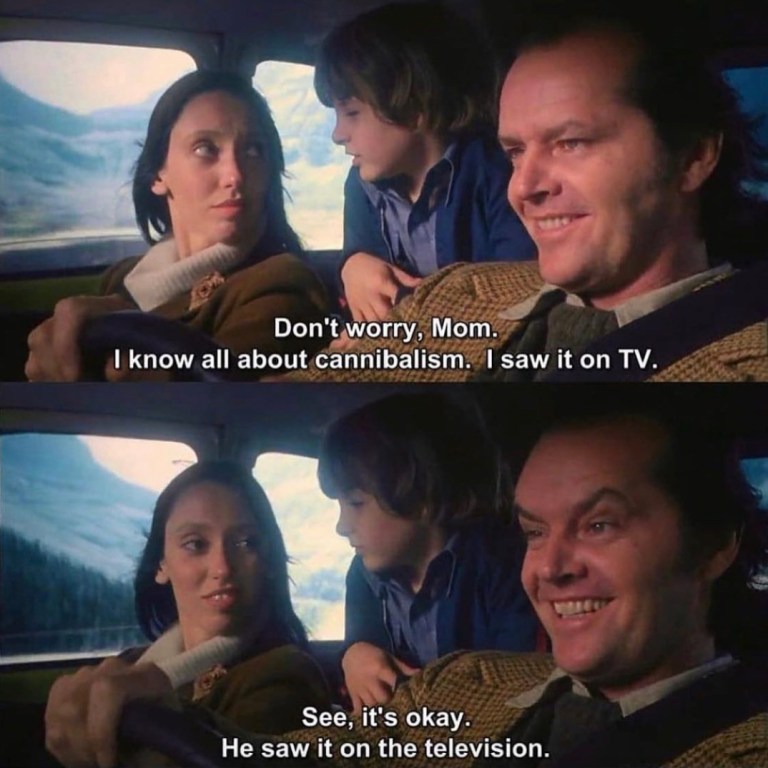
Yet, as many horror fans know, there was a cannibal horror movie trend in the mid to late 1970s and early 1980s spawned by Italian filmmakers like Ruggero Deodato who made several films in the cannibal genre. This lead to what is called the “Golden Age” of cannibal films, if you can call it that, or the “Italian cannibal boom” — and many of these movies went on to become cult classics.
This list catalogs horror movies from the cannibal boom as well as other important cannibal horror movies. The list will also include movies that simply feature acts of cannibalism but aren’t specifically about cannibals.
Table of Contents
Old Cannibal Movies
Blood Feast (1963)

In this exceedingly gruesome film that is widely considered the “first slasher movie,” a crazed Egyptian caterer named Fuad Ramses prepares a feast made of human flesh that is intended to resurrect the Egyptian goddess Ishtar. He gathers the items for his human stew one at a time—by chopping off a woman’s limbs while she bathes; by yanking a woman’s tongue right out of her mouth; and by ripping out a woman’s brains through her skull on a beach late at night. Although the special effects are horrible and the “blood” looks like bright red paint, the film is still nearly impossible to watch due to its exceeding violence. The director, Herschell Gordon Lewis, would go on to make several other zero-budget slasher films, earning himself the moniker “The Godfather of Gore.”
Spider Baby (1968)
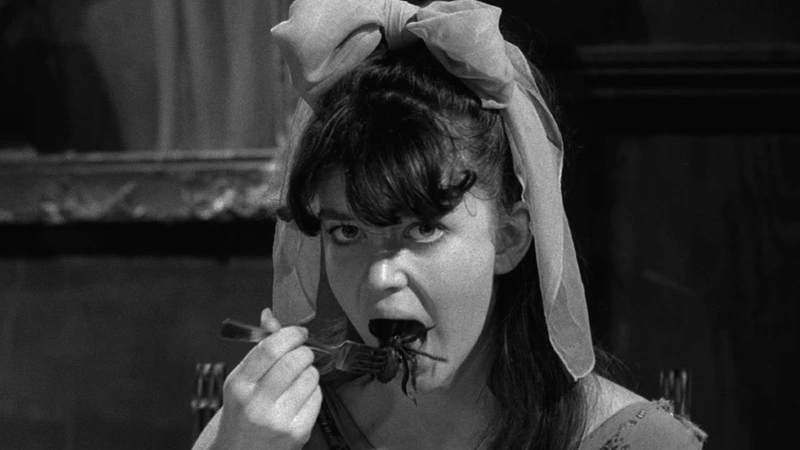
A superbly odd black comedy horror, Spider Baby stars Lon Chaney, Jr. as the caretaker of three siblings in a rotting mansion who all share the same genetic disease that makes them regress into animal primitivism once they reach puberty. The title refers to one of the three children, a girl in her late teens who eats bugs and moves with the grace of a spider. When a lawyer comes to investigate conditions at the mansion, he is murdered and dumped in the basement, where he is eaten by the deadly denizens there, for apparently there are far more than three family members suffering from this genetic disease.
Pigsty (1969)

Released in Italy as Porcile, this film unravels two related stories, only one of which involves cannibalism. In that segment, a man who wanders amid the volcanic wastelands around Mt. Etna joins a band of murderous cannibals. At the end as he faces execution, he proclaims: “I killed my father, I ate human flesh and I quiver with joy.” Time Out says “The story is about the human capacity of destruction and a rebellion against the social prerequisites implied against it.”
Slave of the Cannibal God (1972)

Distinct from the rest of the early 1970s Italian cannibal movies by the fact that the producers were somehow able to snag two famous American actors—Ursula Andress and Stacy Keach—the plot involves a girl and her brother flying to New Guinea to find her missing husband. Upon arrival, they realize he was kidnapped by cannibal tribes. Film Fanatic says the Slave of the Cannibal God features “dense jungles, camera shots zooming in on menacing wildlife, native tribesmen (and women) enacting bestial rituals, and Andress heaving her glistening bosom while making heated proclamations.”
Soylent Green (1973)
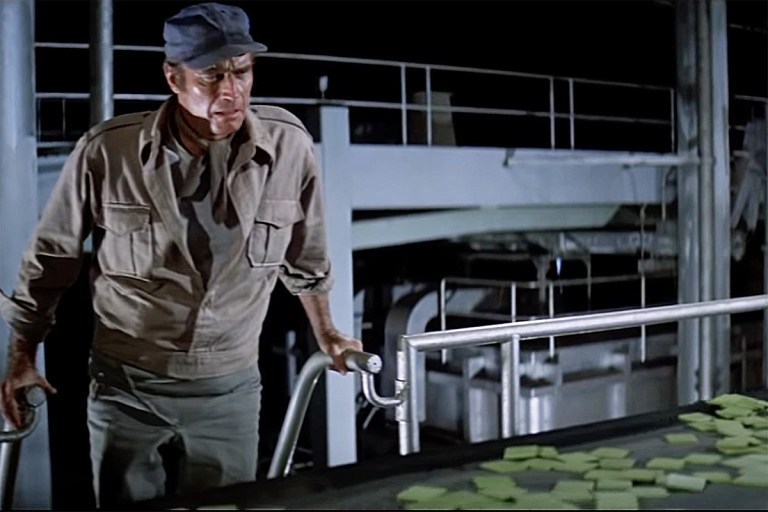
This is perhaps the only film on this list where the entire world practices cannibalism without even realizing it. In the dark, disease-ridden, overpopulated world of 2022, food has grown so scarce that the government issues people crackers called “Soylent Green.” Ostensibly Soylent Green is made from soybeans and is protein-rich. However, Charlton Heston (as Robert Thorn) realizes that the main ingredient in Soylent Green is not soybeans, it is people.
Cannibal Girls (1973)
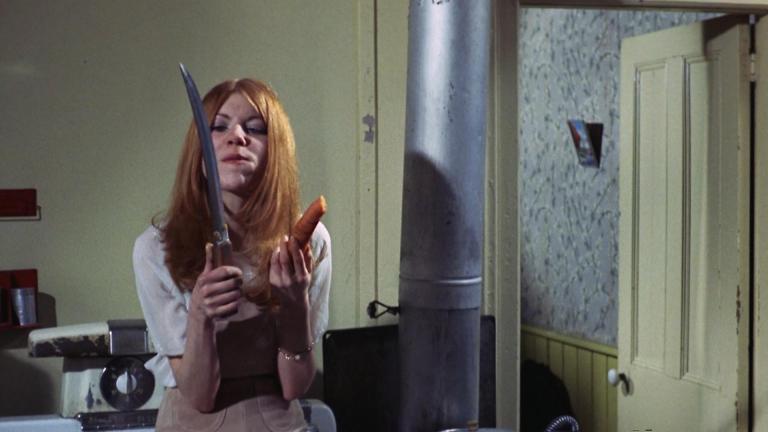
This Canadian horror flick in the grindhouse tradition tells the story of a couple that goes on a remote honeymoon trip. The cannibal part of the movie deals with an urban legend about three alluring women that go by the names Anthea, Clarissa, and Leona who lure men away and eat them alive. In “is this a dream, or is this reality” kind of fashion, the young couple try to come to terms with whether or not this is a real event.
The Texas Chainsaw Massacre (1974)
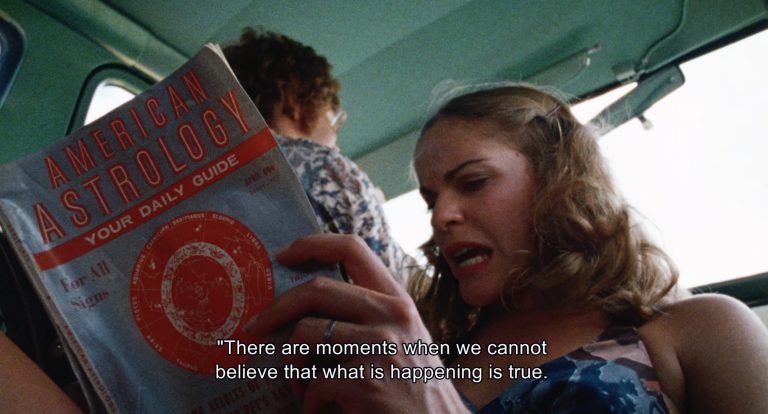
Widely considered one of the most influential horror films of all time, The Texas Chainsaw Massacre sees a group of friends on a road trip stumbling upon a family of cannibals. The main villain in the family is a large mute man named “Leatherface” because be wears a mask made of human skin, a detail thought to be inspired by the real-life story of Wisconsin killer Ed Gein. In fact, the film’s opening credits claim that the events were based on a true story—a lie that helped cement the film’s success.
See also: 16 Trivia Facts About ‘The Texas Chainsaw Massacre’ (1974)
A Boy and His Dog (1975)
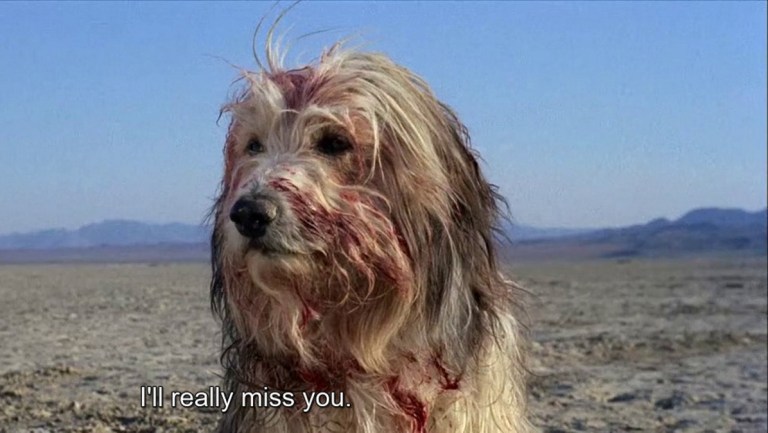
It’s almost impossible to explain why this movie involves cannibalism without spoiling the ending, but all we’ll say is that Don Johnson (Miami Vice) and his dog—who is able to communicate with him telepathically in English—travel over a ravaged postnuclear wasteland trying to survive. Johnson meets a lady friend who, although she meets his physical needs, is far more annoying and less witty and insightful than the dog. At the end, when food is extremely scarce, Johnson must decide whether it’s the girl or the dog who gets eaten.
The Hills Have Eyes (1977)

A traveling family takes a shortcut and is left stranded in the Nevada desert. Soon, they discover they are prey for a clan of disfigured cannibals. With nowhere to go and no one to turn to for help, the family has no choice but to do their best to fight the cannibals and survive.
See also: ‘The Hills Have Eyes’ (1977): 30 Trivia Items and Fun Facts
Jungle Holocaust (1977)

Released in Italy as Ultimo mondo cannibale and in other English versions as Cannibal The Last Survivor and Jungle Holocaust, this is the first in director Ruggero Deodato’s “Cannibal Trilogy,” the most famous of which is 1980’s Cannibal Holocaust. Jungle Holocaust tells the story of an oil prospector whose plane gets damaged upon landing on a remote island. When he finally finds the oil prospecting camp, he realizes that all the workers have been massacred and eaten by cannibals.
Motel Hell (1980)

A superficially friendly brother-sister duo of farmers kills travelers, grind up their flesh, and then sells it as sausage at their roadside stand. The film was originally intended to be a straight horror film directed by Tobe Hooper of Texas Chainsaw Massacre fame until Hooper balked at the script. Much of the original script’s more extreme elements (such as bestiality) was later purged. The final version contains a chainsaw duel not in the original script that may have been a sly middle finger to Hooper.
Eaten Alive (1980)

Like so many other films in the cannibal canon this film deals with conflict between indigenous people and tourists. Eaten Alive follows a young woman who teams up with a mercenary to find her missing sister, only to encounter a bizarre jungle cult led by a white man. Warning: there are endless scenes of animal torture, most of them stock footage from previous cannibal movies such as Sacrifice!, Jungle Holocaust, and Slave of the Cannibal God.
Cannibal Holocaust (1980)
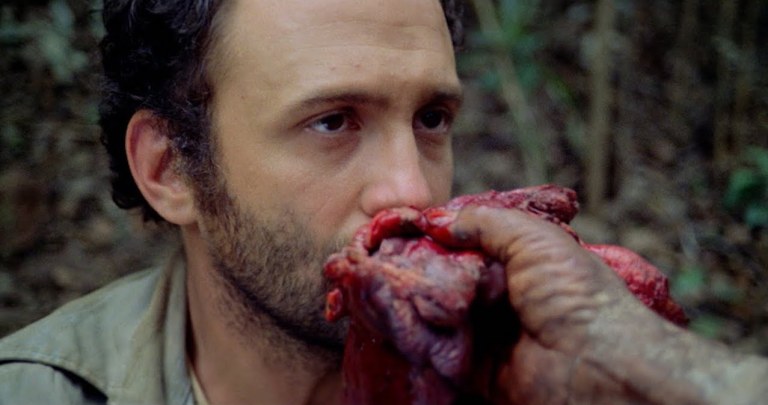
The second and easily the most influential film in director Ruggero Deodato’s “Cannibal Trilogy,” Cannibal Holocaust is actually two films: The first involves a professor in a rainforest on a rescue mission, and the second is the film footage he finds by a lost documentary crew in the middle of that rainforest. The violence is graphic: There are scenes of castration, abortion, rape and endless consumption of human flesh. Though Cannibal Holocaust is not based on a real story, the murder scenes were so realistic that the director was arrested 10 days after the film’s premiere and charged with murdering three of his own actors. The charges were eventually dropped, but that should give you an idea of how graphic the film is.
Cannibal Apocalypse (1980)

Veteran Hollywood actor John Saxon stars as a Vietnam vet who was hoping for a peaceful retirement in Atlanta until an ex-combat partner shows up to inform him about rampant cannibalism in the Vietnamese jungle. But before he can take another breath, it appears that the cannibals have already infested Atlanta—because cannibalism can now be transmitted via a virus when you bite someone. The two war vets must now plot for a safe escape.
Cannibal Ferox (1981)
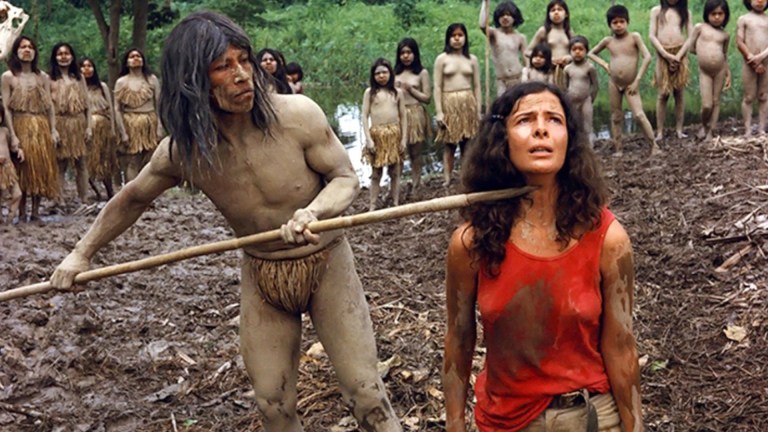
Three friends set out to disprove the existence of cannibalism on a trip to the Amazonian jungle. The film includes scenes of graphic animal cruelty (which are unfortunately real footage). Little White Lies says that Cannibal Ferox remains a hard watch, playing a duplicitous game with our own sense of moral orientation as it both feeds and condemns our desire for the taboo sensations promised by its title.”
Eating Raoul (1982)
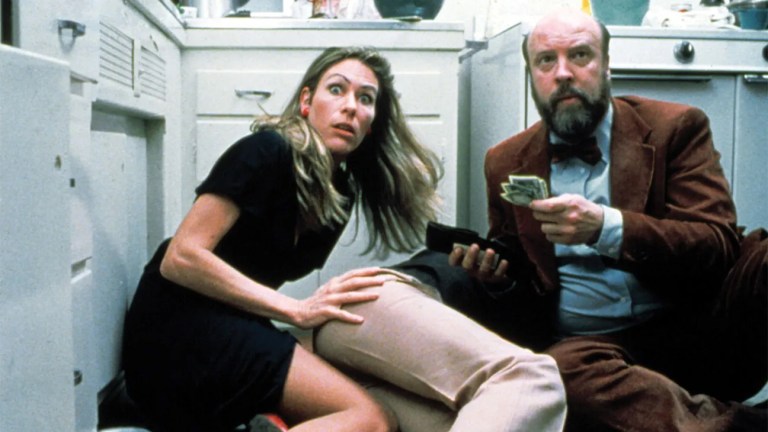
A dark comedy about eating human flesh and selling it at a restaurant, this movie was a sleeper hit when it first came out and has gone on to create a cult following. The plot involves Paul and Mary Bland—an aptly named puritanical married couple who find themselves surrounded by late-1970s hedonism. The couple’s only dream is to escape city decadence and open a restaurant out in the country. They decided to kill two birds with one stone by placing a swingers’ ad in a local paper. When people reply, they are murdered and given to Raoul, a Mexican criminal whose plan for corpse disposal involves cannibalism. The Blands are then able to both put a dent in urban degeneracy as well as open their dream restaurant in the country.
Amazonia (1985)

With an original Italian title of Schiave bianche – Violenza in Amazzonia and also released in English as White Slave, Amazonia tells the tale of a woman whose parents were kidnapped and killed in the Amazon. She seeks vengeance against a tribe of indigenous headhunters, but is kidnapped herself. In the end, she realizes that her parents’ murders were arranged by another family member as a result of a land dispute.
Cannibal Women in the Avocado Jungle of Death (1989)

It’s rare to get a movie that features an entire plot synopsis in its title, but this would be one such case. A group of “Piranha Women” who live in the “Avocado Jungle”—which for some reason is located near the dry desert wastelands of San Bernardino, CA—subsist on the flesh of men they seduce and kill. The US government sees this not as a threat to male survival, but to the valuable avocado groves in the jungle, so they send a feminist professor into the jungle in the hopes that she can persuade them to relocate near Malibu.
Modern Cannibal Movies
The Silence of the Lambs (1991)

This psychological horror movie is more of a violent murder mystery/detective film than a cannibal movie, but it does feature a character named “Hannibal the Cannibal” played by Anthony Hopkins (who won the Academy Award for Best Actor for the role). Hannibal is an incarcerated serial killer who assists FBI trainee Clarice Starling (Jodie Foster) with the investigation into a serial killer and a senator’s missing daughter. The story gets quite a bit darker in the prequel Hannibal Rising (2007) where we learn about how Hannibal became a cannibal to begin with.
Ravenous (1999)

In a script that was said to be inspired by the real-life 19th-century misadventures of the Donner Party in California and Alferd Packer in Colorado—both of which involved American explorers getting trapped in freezing conditions that force them to turn to cannibalism—Ravenous is a Western horror film set in California in the 1840s. It sees rescue workers whose mission is interrupted by a psychotic cannibal. Roger Ebert writes: “Of course a vampire is simply a cannibal with good table manners, and “Ravenous” is a darkly atmospheric film about an epidemic of flesh-eating and the fearsome power that it brings….‘Ravenous’ is clever in the way it avoids most of the cliches of the vampire movie by using cannibalism, and most of the cliches of the cannibal movie by using vampirism. It serves both dishes with new sauces.”
The Green Inferno (2013)
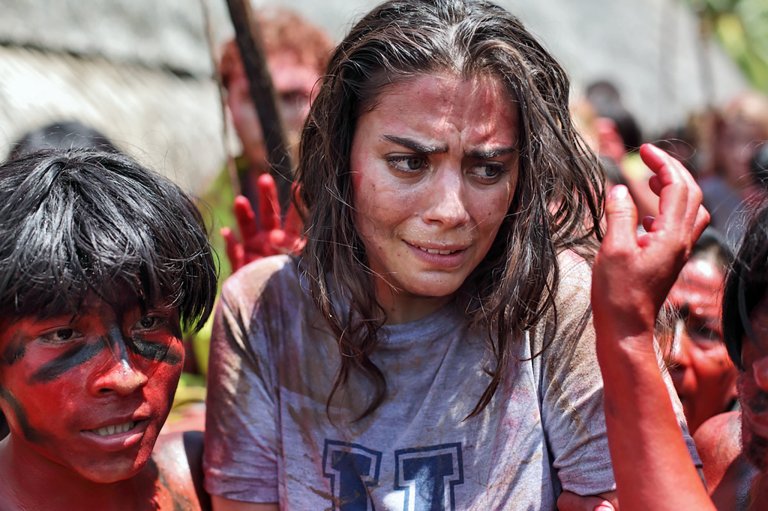
Eli Roth’s The Green Inferno recreates the transgressive cannibal movies of decades prior through the lens of Roth’s own dark sense of humor. The movie is about a group of college-aged activists whose plane crashes while on their way out of the Amazon rainforest after a protest. The survivors of the crash are abducted by a tribe that practices cannibalism, leading to scenes that are both ridiculous and gross at the same time.
Bone Tomahawk (2015)

A small-town sheriff in the old West leads a posse whose mission is to rescue the town doctor after she was kidnapped by a troglodyte clan of cannibalistic savages. Scream kings Kurt Russell, Patrick Wilson, David Arquette and Sid Haig appear. All Horror says “This movie may be mostly a Western, but the brief horror it does offer packs a punch.”
Raw (2016)
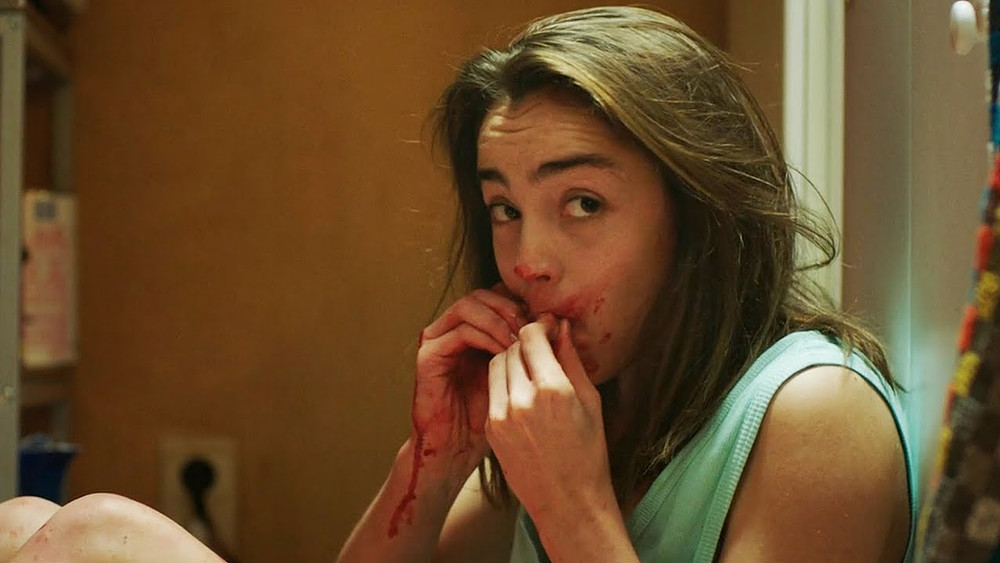
Justine was raised as a vegetarian but when she starts veterinary school, she gets her first taste of meat during a hazing ritual. To her horror, her first taste of real animal flesh leads to an insatiable desire to eat more and more meat. She sneaks off with a friend to eat a furtive hamburger, but it’s still not enough—what she lusts for more than anything is raw human flesh.
The Bad Batch (2016)

In a remote Texas wasteland located outside the newly redrawn boundaries of the United States, all of society’s rejects (the “Bad Batch) live. A young woman named Arlen (Suki Waterhouse) gets kidnapped by cannibals and must use her wits to survive. The film also stars Keanu Reeves as a cult leader and won the Special Jury Prize at the 73rd Annual Venice International Film Festival.
Bones and All (2022)

A horror road film about a young woman, Maren, who has been a cannibal for as long as she can remember. Abandoned by her parents, Maren finds another cannibal, Lee, and the two fall in love. Crossing the country in a pickup truck they stole from a man whose flesh they ate, the two lovers are unsure what king of future they will be able to have.
Fresh (2022)
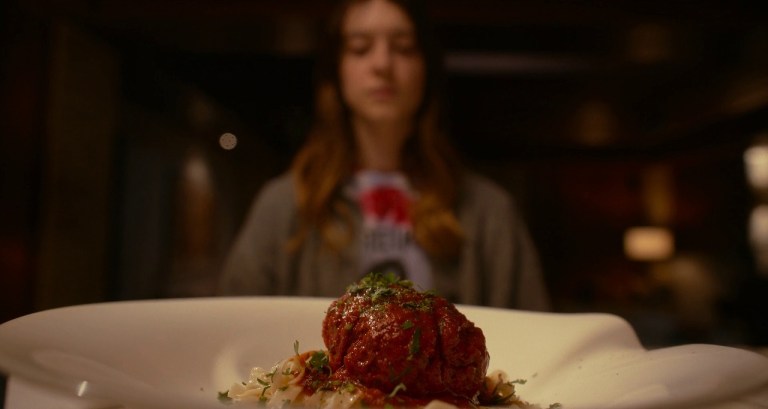
Daisy Edgar-Jones stars as Noa, a young woman who has all but given up on dating when she meets Steve (Sebastian Stan) at a grocery store. Steve charms Noa and she agrees to a weekend away together. Unfortunately for Noa, Steve is not only actually married, he’s also a cannibal and keeps a harem of women locked up in his house to slowly process into edible delights for his sicko clients.
More Movies with Cannibal References
- Fires on the Plain (1959) this horrifying movie from Japan depicts the violence of war (including cannibalism).
- Suddenly, Last Summer (1959) is based on a play by Tennessee Williams, and the film makes references to taboo subjects such as incest and cannibalism.
- Death Line (1972) the London subway system is terrorized by a cannibal serial killer in this 70s British horror movie.
- Tenderness of the Wolves (1973) this German movie is based on real serial killer and cannibal Fritz Haarmann. Fritz killed and possibly ate dozens of boys and men.
- Fried Green Tomatoes (1991) in what seems to be a heartwarming tale of Southern women bonding over tales of misfortune and love gone wrong takes a dark cannibalistic turn when it is strongly implied that the body of one of the woman’s abusive husbands became an ingredient in a charming little cafe’s barbecue sauce.
- American Psycho (2000) while the movie itself does not depict cannibalism, the serial killer that stars as the protagonist, Patrick Bateman, eats people in the book version and this is implicitly suggested in the film as well.
- Jennifer’s Body (2009) while mostly a comedic demonic possession film, Jennifer’s Body does include cannibalism.
- The Road (2009) isn’t strictly about cannibals, but the cannibalistic survivors in this bleak post-apocalyptic film provide some of the most tense moments in the movie.
- He Never Died (2015) this one was bought by Netflix and features Henry Rollins as vampire-like creature that needs to feast on humans to survive.
- The Cannibal in the Jungle (2015) is a TV mockumentary from Animal Planet about a scientist who was convicted of cannibalism in Indonesia in 1977. The Cannibal in the Jungle is not a true story, but it’s still an effective and entertaining movie.
- Society of the Snow (2024) a Spanish survival thriller about the very real 1972 Andes flight disaster in which the survivors resorted to cannibalism while they endured 72 days in the wilderness before being rescued.